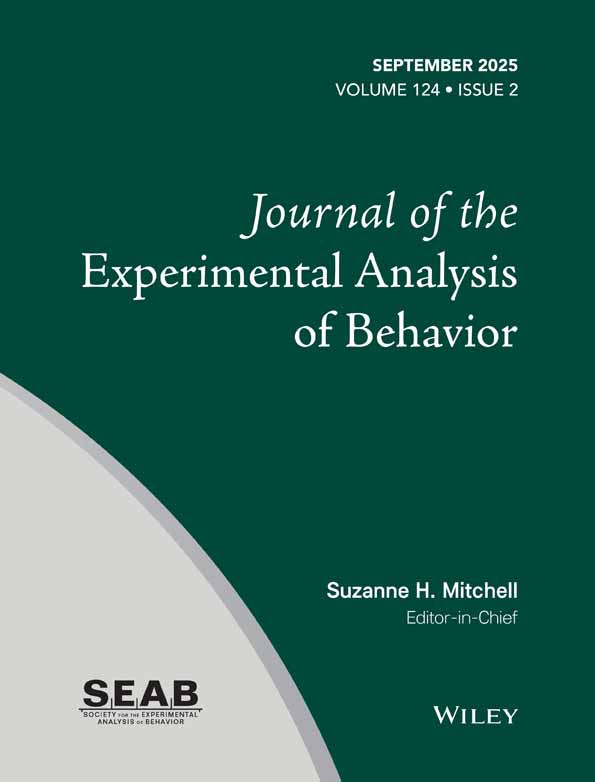KEY PECKING IN PIGEONS PRODUCED BY PAIRING KEYLIGHT WITH INACCESSIBLE GRAIN1
This research was supported in part by Biomedical Sciences Support Grant FR7084 from the National Institutes of Health to the University of Pittsburgh, and by Grants MH19757 and MH24092 from the National Institute of Mental Health to the first author.
Abstract
In Experiment I, keylight was paired with inaccessible grain delivery (under two conditions of keylight intensity) to determine if autoshaping would occur in the absence of primary reinforcement. In Experiment II, the procedure was repeated with accessible grain, for comparison. In Experiment III, the procedures were repeated with explicitly unpaired presentations of keylight and either inaccessible or accessible grain. The results indicated that key pecking occurred as quickly in the presence of keylight pairings with inaccessible grain as with accessible grain, though (except for one bird) key pecking was not maintained with inaccessible grain. Furthermore, compared to the dim keylight, the bright keylight greatly suppressed key pecking when paired with inaccessible grain, and reduced the rate of key pecking when paired with accessible grain. Little key pecking occurred in groups exposed to explicitly unpaired presentations of keylight (whether bright or dim) and grain (whether accessible or inaccessible). When the birds in Experiment III were retested with explicitly paired presentations of keylight and grain, little key pecking was observed, suggesting suppressive effects of prior explicitly unpaired presentations. It is suggested that the effects of key-brightness manipulation were produced by the association of grain with cues other than the response key, or by distraction produced by partial illumination of the grain hopper.




